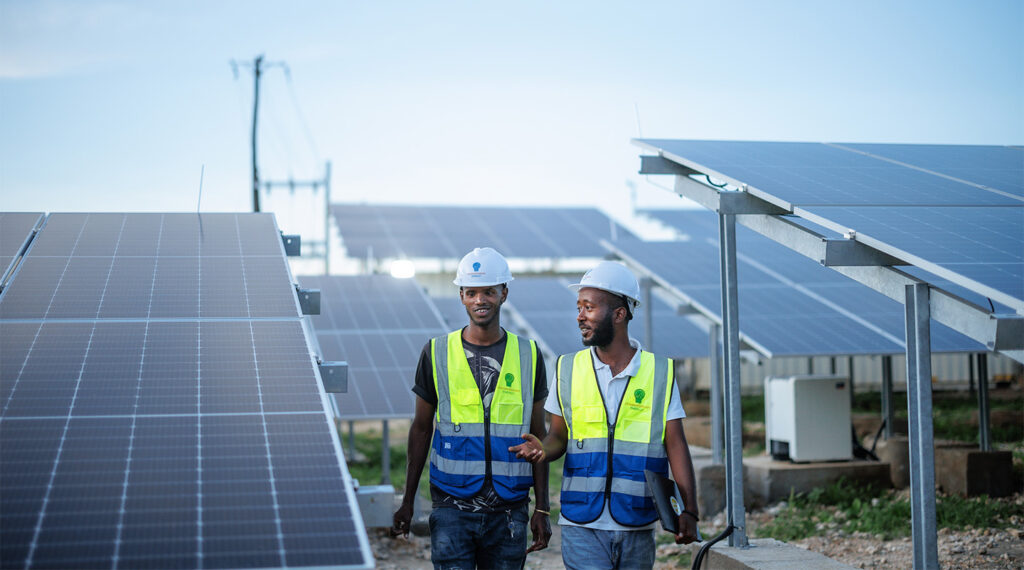Why philanthropy must champion clean energy to unlock climate adaptation

The global fight against climate change has rightfully focused much of its energy transition efforts on decarbonisation, especially in high-consumption markets like the US, the European Union and the UK. These efforts, while essential for mitigating climate change, have inadvertently left behind some of the most vulnerable communities. As we confront the escalating impacts of the climate crisis, it is crucial to recognise that access to clean, affordable energy is not just a mitigation tool – it is a cornerstone of climate adaptation.
The global energy landscape is marked by stark inequalities. Goal 7 of the Sustainable Development Goals calls for universal access to clean and affordable energy by 2030. Yet, despite the rapid adoption of renewable energy technologies in many parts of the world, over 660 million people are projected to still lack access to reliable electricity by 2030. This energy poverty is most pronounced in regions already grappling with the severe impacts of climate change, such as droughts, floods, and extreme weather events. Without access to energy, these communities are not only more vulnerable to climate shocks but are also less equipped to recover and adapt.
Reliable energy enables communities to improve food storage, ensure reliable access to water, and implement climate-smart agricultural practices such as solar-powered irrigation or pumps for rainwater – all of which are critical for adapting to our changing climate. However, nearly 2 billion people will continue to rely on polluting fuels like charcoal and biomass for cooking in 2030, practices that degrade ecosystems and pose severe health risks, further weakening their resilience.
Beyond enhancing resilience, clean energy systems also catalyse economic growth and provision of quality public services. This transition not only strengthens community resilience but also creates opportunities for workers and communities to prosper within a clean energy economy.
At Mercy Corps, I have witnessed the transformative power of clean energy in enhancing food security, disaster preparedness and economic growth. Ethiopia, for example, is home to over 4.7 million forcibly displaced people, where it is estimated that less than 7% have access to energy. Against this backdrop, Mercy Corps developed the Enter Energy initiative, designed to power refugee, displaced and host communities through clean, affordable and sustainable energy, as well as decarbonise the humanitarian operations that support them.
By partnering with Humanitarian Energy Plc, a local private energy company, to deliver the country’s first solar-powered 254 kWp mini-grid at the Sheder refugee camp, 17,600 refugees and 3,000 host community members have gained access to clean, reliable, and sustainable energy.
This project has shown promising results, benefiting individuals, families, small businesses, community institutions, and humanitarian organisations. From reduced reliance on harmful and polluting forms of energy, to the peaceful integration of refugees into the economy, the solar-powered energy grid also contributes to Ethiopia’s target of universal electrification by 2025.
How philanthropy can close the gap for clean energy access
Approaching clean energy access in a localised, market-driven, and holistic way, is essential to embedding successful climate resilience among the most fragile communities. To truly scale these solutions though, a major shift is needed. European philanthropies and foundations can have a transformative impact by rethinking traditional energy investments and embracing a more comprehensive approach. With these recommendations, donors can drive a global energy transition that prioritises resilience in the world’s most vulnerable regions.
- Scale up investment in clean energy access
Private investment in clean energy access should be scaled up, recognising the dual benefits to mitigation and adaptation. The funding gap for achieving universal energy access, particularly in low-income countries, remains vast. Investment in clean energy has declined sharply from $24.8 billion in 2017 to just $10.8 billion in 2021, which is far short of the $2 trillion needed annually by 2030. - Embed energy into adaptation planning
Philanthropic organisations should advocate for, and finance initiatives, that integrate clean energy as an adaptation strategy within government’s Nationally Determined Contributions (NDCs) and National Adaptation Plans (NAPs). It is also key to support local governments and civil society to embed clean energy activities within community and municipal adaptation plans. This strategic alignment will ensure that energy access becomes central to building climate resilience. - Invest in filling evidence gaps
Philanthropy has a critical role to play in supporting research that builds the evidence base for how clean energy can enhance climate and social resilience. By funding studies on subsidy gaps, delivery mechanisms, and scalable business models, philanthropy can provide the data needed to influence policy and improve programming. This research will be vital in shaping effective, equitable energy solutions that leave no one behind. - Influence policy and donor strategies
European philanthropies are uniquely positioned to influence donor strategies and advocate for policies that prioritise energy access for the most climate-vulnerable communities, including those in fragile and conflict-affected situations. By integrating peace and governance interventions into energy programmes, you can strengthen local capacities and governance structures, ensuring long-term sustainability and impact. - Centre climate justice in communities
To scale lasting renewable energy solutions in remote and underserved communities, philanthropy should insist that projects engage frontline and marginalised communities in the planning and decision-making processes. For example, by financing local entrepreneurs, you can ensure that renewable energy solutions are both effective and sustainable. And by partnering with quality assurance entities, they can help maintain high standards, even in the most isolated regions. A localised approach is essential to ensuring solutions are tailored to unique contexts, thereby maximising the chances of success.
This decade is pivotal for climate action. We must move beyond isolated projects and ensure that access to clean energy takes a more central role in the adaptation conversation. We all have a responsibility to ensure that the clean energy transition is inclusive and equitable. This is not just about expanding energy access – it is about ensuring that energy systems are resilient, sustainable, and capable of supporting communities to adapt to the rapidly changing climate.
Mercy Corps launched the Climate: Possible campaign because we know what climate resilience looks like and we understand what it takes to get there. Each of the four position papers in our Climate: Possible series articulates proven and high-potential solutions to climate challenges, drawing on Mercy Corps’ extensive experience, evidence, and insights gathered from operating in the most fragile, climate-vulnerable contexts.
Download “The power of renewable energy – Advancing climate adaptation and resilience”
Photo credit: © Jjumba Martin/Mercy Corps
Authors

